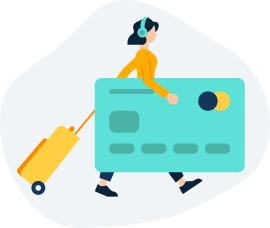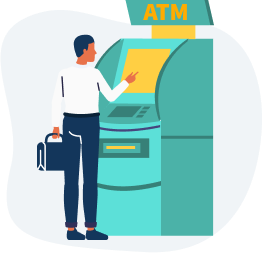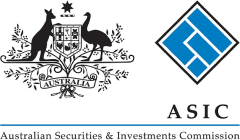Currency in Norway
A Travel Money Guide to Norway
Norway is a land full of breathtaking scenery, the UNESCO site the Geirangerfjord, the northern lights over Lofoten Islands and Jotunheimen National Park. But it isn’t a budget destination and to get the most out of your trip, it’s a good idea to learn everything you can about the local currency and payment options before you go.
The currency that is used in Norway
In Norway, locals use Norwegian Krone, which has the international code NOK and the symbol kr.
The official currency in Norway is also the Norwegian Krone. Anymore than 1 krone is a kroner. Quite often the symbol isn’t used in pricing, it’s just the number and sometimes it appears after the number, for example 150kr.
Money in Sweden
Norwegian banknotes have 5 denominations: 50kr, 100kr, 200kr, 500kr and 1,000kr.
Norwegian Krone has 4 coin denominations: 1kr, 5kr, 10kr and 20kr.


Using Your Bank Card in Norway
Most Norwegian businesses are well set up to receive card payments. Some of the best travel money cards include debit, credit and prepaid cards. But before you use your bank card willy-nilly, it’s worth reading up on the fees and charges you might incur.
Debit Cards
You’ll probably want a debit card if you plan to withdraw money from an ATM. While you may also be able to pay with a debit card in some businesses in the major destinations, you might discover some hefty fees on your account summary.
Depending on your bank, you could be hit with fees for foreign ATM withdrawals or currency conversions. But some banks are better than others; we recommend checking out Wise, ING and Revolut, all of which have travel-friendly debit cards that waive these charges.


Credit Cards
Credit cards can come with some enticing perks, including added security, loyalty programs, and even free travel insurance.
But are they worth it?
Major local businesses, including hotels, restaurants, airline offices, and department stores, accept credit cards. But you might have to pay a surcharge.
Mastercard and Visa are widely accepted. You may also be able to use your American Express card, though local ATMs won’t accept them.
Just be aware of additional charges you may incur for foreign transactions. These could include:
- International transaction fees
- High exchange rate margins
- ATM fees
- Potential ‘cash advance fees’ if you use an ATM
If you still prefer credit cards over any other payment, consider going with a company that offers cards that waive certain travel fees. Bankwest Platinum and 28 Degrees both have travel-friendly cards.
Prepaid Travel Cards
The biggest advantages of prepaid travel cards are that you can lock in a favourable exchange rate. You also get a handy back-up card.
Just remember that while they are convenient, you could end up paying a long list of hidden fees. Many travel cards still impose:
- Currency conversion fees
- Uncompetitive exchange rates
- International ATM withdrawal fees
- Initial load fees
- Reload fees
- Inactivity fees

How to Buy Norwegian Krone Before You Go
There’s a certain reassurance that comes with stepping off the plane (or cruise ship) already cashed up with Norwegian Krone.
Buying Norwegian Krone before you leave Australian shores isn’t just convenient. It can also save you money. But it all depends on where you get your Norwegian Krone in Australia. There are 3 main options:
- Buy NOK online and have it delivered or collect it in-store
- Swap your Norwegian Krone for Australian dollar from a money changer
- Buy your Norwegian Krone at your home airport
Try S Money or a similar online currency exchange store to get rates that reflect the comparisons you see on XE or Google.
If you choose online delivery or in-store pickup, check the processing time. Some exchange companies with online options suggest you allow between two and five days to process currency.
Prefer in-store currency exchange? Head to the CBD of your nearest city for the most competitive exchange rates; suburban bureau de change outlets tend to have poorer rates and fees.
Currency exchange counters in Australia’s airports are infamous for their atrocious exchange rates. Avoid them if you can.
How Much Cash Should I Bring to Norway?
Budgeting for your trip gives you a good idea of how much you may need for the length of your stay. This might keep you accountable, help you stretch your savings, or help you avoid having to convert currency back into dollars at the end of your trip.
The average daily travel budget in Norway is about $200. Some of the expenses you might be looking at include:

$160 per night
A double room in a mid-range hotel

$40
Average lunch for 2

$14
A bottle of beer

$50
Average daily transport

$20
Admission for entertainment
After calculating how much cash you will need, the next step might be to work out the best ways to take money to Europe. Aside cash there are 3 types of travel money cards you can take and use easily in Europe. They include a debit card, credit card and prepaid card.
How to Exchange Currency in Norway
Places like Oslo and Bergen receive great numbers of tourists, so there are facilities to cater to money exchanges. Beyond these major destinations, it’s best to get cash before you venture into remote territory. There are 3 popular choices to exchange currency in Norway, ATMs, currency exchanges and traveller's cheques.

ATMs
There are lots of ATMs in Norway, in big cities and small rural towns. They offer English as well so you wont be left stranded. Some of the common ATMs are DNB, Nordea Bank and Danske bank.
Sometimes there is a maximum limit on how much you can withdraw on a daily basis however your 4 pin you use in Australia should work in Norway as well.
Depending on your bank, you may have to pay for overseas ATM withdrawals and currency conversions. To reduce the amount you’ll pay in fees, try to withdraw just the right amount of money you’ll need for the duration of your trip.
Don’t forget: Let your bank know you’re travelling! If they detect a foreign transaction but aren’t aware you’re overseas, they could end up freezing your card.
Currency Exchange in Norway
You won’t have any problem changing money in the city. There are plenty of bureaus de change at Gardermoen Airport in larger cities like Oslo. A popular bureau de change is Ria and they are hard to miss with a bright red sign.
Beware not every bank changes money and although you might be able to change money at a post office, the fees to change money might be high and the exchange rate might be poor.


Travellers Cheques
Once a godsend for frequent travellers, travellers cheques are quickly becoming obsolete. They can be a hassle to exchange – in Norway, only a few exchange services accept them.
Not only that, they’re typically costly to exchange, with poor rates and high fees. ATM withdrawals and cash currency exchanges are better options.


